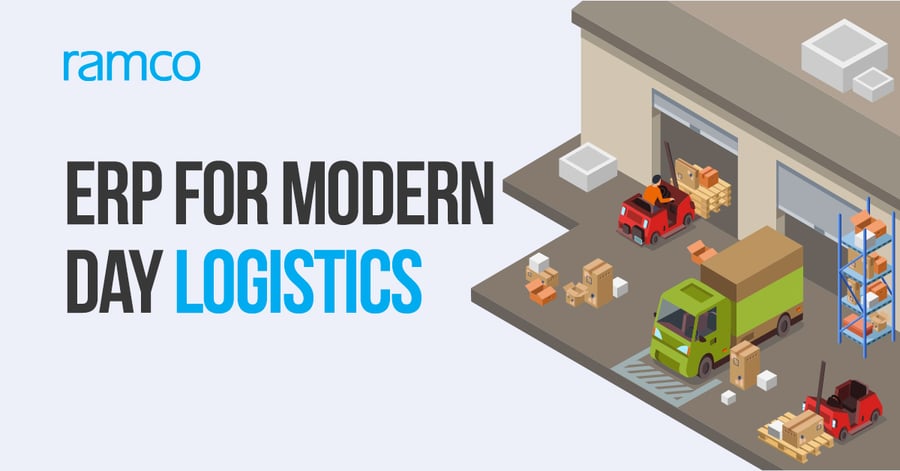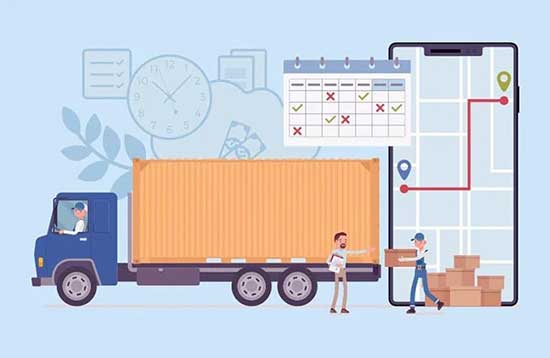
Evaluating Logistics ERP Solutions: A Modern Perspective
How to Evaluate Logistics ERP Solutions: A Modern Approach
9:03
Published :

It has been a couple of decades since the argument on whether the term Supply Chain Management should be called “Demand Chain Management” gained prominence. This very well highlights the fact that the chain is being driven by the market, indicating the shift in power from sellers to buyers. Similarly, there were justified calls to replace the term “Chain” with “Network” considering the involvement of multiple suppliers and customers in the entire system. These changes were well accepted following the rise of outsourcing and globalization, after which there was a widespread realization that this acceptance should be backed by co-operation and trust among the various parties to make the network effective and to deliver a collective value to the customer at the lowest cost to the network. Companies like Dell, Zara, Toyota, and Caterpillar took the lead followed by others, in creating this network of companies mutually and co-operatively working together to deliver superior cost and value advantages not only to the end customers but to themselves as well. Guess that in itself is a long premise for a blog.
Nevertheless, the point is back then, it required the organizations to eliminate the arm’s length approach they had with their suppliers, and form a trust-based network so that all the parties worked in sync and utilized shared data & information towards a common goal. One of the enablers which made this network effective was Information Technology which facilitated the sharing of information promptly with the required parties and often on a real-time basis. Having said that, it is understood that the onus remained on the companies to identify and form the network of companies and establish trust among them.
Fast forward to today’s world and the concept remains as contemporary as ever and will continue to do so. However, there is a change in approach. While the companies across industries continue to identify suppliers and partners for their network, they expect the IT systems too to complement them in this. That is, IT systems are expected to come with the add-ons and plug-ins which will either bring the suppliers to the network or the capabilities to connect with the suppliers from the word go.
It is no different in the world of Logistics too. For example; a Freight Forwarding application is evaluated for its capability or partnerships to connect with ocean liners or customs agent or government portals as much as for its operational capabilities of quote management, planning, tendering or documentation. Similarly, a Transportation Management System for a 3PL industry is expected to come with a database of lanes, rates, and suppliers whereas a Warehouse Management System is expected for its partnerships or integration capability with robotics, carriers, ASRS, etc. To stay ahead of this trend, Ramco Systems has embarked on a journey to equip its exclusive software solutions for Logistics industry with the partnerships and plug-ins necessary to enable a shared platform for the all parties in the ecosystem it operates in (Logistics Service Providers, Customers, Suppliers, Agents, Carriers, etc.). Some of them are as follows;
Companies should opt for ERP solutions that support the seamless integration of activities through the entire network supply chain. The key to a successful logistics strategy is that multiple management, including suppliers, customers, carriers, and agents through a single interface should be possible. Ramco offers a break in logistics silos by providing an integrated platform of all stakeholders in real time. This end-to-end integration improves operational efficiency and reduces delays, helping companies remain competitive in an environment where customer expectations and supply chain demands are constantly shifting. Whether it's managing inventory, tracking shipments, or coordinating deliveries, ERP solutions offer visibility and control, making it easier to optimize processes and maintain a lean, agile network.
In addition, ERP solutions provide the spine of logistics companies to scale efficiently, adapt to market changes, and drive innovation. Ramco's ERP services ensure logistics businesses are well-equipped for handling increased volumes and complexity through the integration of advanced functionalities such as real-time data analytics, customer relationship management (CRM), and seamless communication with vendors. This helps businesses identify new opportunities, reduce operating costs, and enhance customer satisfaction. With digital transformation taking center stage in the logistics sector, ERP solutions will become more essential in maintaining smooth operations, improving profitability, and ensuring businesses stay ahead in the fast-paced global market.
As logistics networks become more complex and customer expectations continue to evolve, Third-Party Logistics (3PL) providers are under immense pressure to deliver speed, accuracy, and scalability. The role of warehouse management has therefore shifted from being purely operational to being a strategic differentiator. To remain competitive, logistics service providers must invest in the best WMS for 3PL, ensuring their warehouses operate with precision, agility, and end-to-end visibility.
Why
Unlike traditional warehouse operations, 3PL environments handle diverse clients with unique requirements, from order fulfillment to inventory management across multiple locations. This makes generic warehouse solutions insufficient. The best 3PL warehouse management software is designed to manage multiple customers on a single platform, offering the flexibility to configure client-specific rules, billing models, and reporting. This level of customization empowers logistics providers to deliver tailored services while maintaining cost efficiency.
When
Modern 3PL warehouse management software integrates seamlessly with transportation systems, e-commerce platforms, and ERP solutions to create a unified logistics ecosystem. Critical features include real-time inventory visibility, automated billing, slotting optimization, and advanced reporting tools. These capabilities not only enhance operational efficiency but also build trust with clients through transparent and accurate service delivery. Furthermore, scalability is a core advantage, enabling providers to support rapid growth in industries such as retail, e-commerce, and manufacturing without compromising on performance.
By adopting the best 3PL warehouse management software, companies position themselves to reduce operational silos, improve customer satisfaction, and gain a competitive edge in a network-driven logistics environment. As supply chains continue to evolve, investing in specialized WMS solutions is no longer optional but a necessity for sustainable success.
True to its claim of a single integrated system, Ramco Systems offers an end-to-end solution spanning operational and business applications to Logistics industry while also bringing along an ecosystem of solutions which will enable logistics companies to extend beyond their operations and compete as a network in the current world where competition is no longer between businesses but networks.
A Logistics ERP integrates all operations across a supply chain, including inventory, transport, warehousing, and vendor management. It provides end-to-end visibility, streamlines workflows, reduces errors, and ensures faster, cost-efficient decision-making, helping logistics companies stay competitive in a dynamic market.
ERP systems unify data from multiple sources- suppliers, carriers, warehouses, and customers- allowing seamless planning, monitoring, and execution. Integration reduces manual coordination, prevents siloed operations, and ensures timely shipments, optimized routes, and better resource allocation across the logistics network.
Look for real-time data analytics, integration with warehouse and transportation systems, automated billing, multi-client support, scalable architecture, environmental impact tracking, and plug-ins for e-commerce, carriers, and robotics. These features ensure operational efficiency, flexibility, and improved customer satisfaction.
Ramco’s ERP connects all stakeholders- suppliers, customers, carriers, agents, and warehouses- on a single platform. With APIs, partnerships, and plug-ins, it enables real-time communication, data sharing, and joint planning, fostering trust and collaboration while reducing delays and operational silos.
A unified ERP improves visibility, reduces operational costs, enhances scalability, ensures compliance, and supports strategic decision-making. By integrating warehouse, transportation, and e-commerce operations, logistics providers gain agility, faster turnaround times, and better service levels for a competitive edge.
3PL WMS manages multiple clients, unique fulfillment rules, and complex inventory across locations. It provides real-time visibility, automated billing, slotting optimization, and advanced reporting, ensuring accuracy, efficiency, and scalability in a competitive, network-driven logistics environment.
ERP acts as the backbone of digital logistics, integrating advanced analytics, CRM, IoT, and automation. It enables businesses to scale operations, reduce costs, track shipments in real-time, and adapt quickly to market changes, ensuring faster, smarter, and more efficient supply chain operations.
By consolidating data from warehouses, transport, carriers, and suppliers on a single platform, ERP eliminates disconnected workflows, improves coordination, and ensures all stakeholders operate from a shared, real-time view of the supply chain.
Yes. Modern ERP platforms automatically track regulations, taxes, and reporting requirements across regions, ensuring compliance while reducing the risk of penalties, delays, or legal issues in complex logistics operations.
Integration with shopping carts and order management systems enables real-time order visibility, automated fulfillment, and accurate inventory tracking. This ensures faster delivery, fewer errors, and improved customer satisfaction for logistics service providers handling multiple clients.

All Rights Reserved. © Copyright 2024. Ramco Systems.